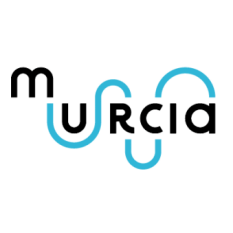
What to see in Caravaca de la Cruz
Basilica Sanctuary of the Vera Cruz
The Royal Basilica Sanctuary of the Vera Cruz began to be built in 1607 on an old chapel where a Lignum Crucis was deposited—that is, a piece of the true cross on which Christ was crucified.
Its construction took almost 100 years, and it was not until 1703 that the work, which has a Baroque style, was completed. At the end of the Spanish Civil War, it was used as a concentration camp for Republican prisoners.
Its construction took almost 100 years, and it was not until 1703 that the work, which has a Baroque style, was completed. At the end of the Spanish Civil War, it was used as a concentration camp for Republican prisoners.
Museum of the Vera Cruz

This is located in the Basilica Sanctuary of the Vera Cruz, inside the old House of the Chaplain.
The museum's collection comes from the “Museo de Arte Sacro e Historia de la Vera Cruz”. It has collections of paintings, goldsmiths, and documents. The most important paintings are six oil paintings from the 16th century by Hernando de los Llanos, a painter considered a disciple of Leonardo da Vinci. Four of the paintings represent the Miracle of the Appearance of the True Cross.
The museum's collection comes from the “Museo de Arte Sacro e Historia de la Vera Cruz”. It has collections of paintings, goldsmiths, and documents. The most important paintings are six oil paintings from the 16th century by Hernando de los Llanos, a painter considered a disciple of Leonardo da Vinci. Four of the paintings represent the Miracle of the Appearance of the True Cross.
You can also see part of the old castle.
Old Town
The old town of Caravaca de la Cruz was declared a Historic-Artistic Site. The route runs over the “Cerro del Castillo”. It is the oldest neighbourhood in Caravaca de la Cruz, formed between the 12th and 13th centuries.
The medieval neighbourhood has an irregular layout, with narrow and steep streets that intersect, as well as squares and dead ends. It is still possible to see remains of the old wall that surrounded the neighbourhood.
The medieval neighbourhood has an irregular layout, with narrow and steep streets that intersect, as well as squares and dead ends. It is still possible to see remains of the old wall that surrounded the neighbourhood.
El Salvador Church
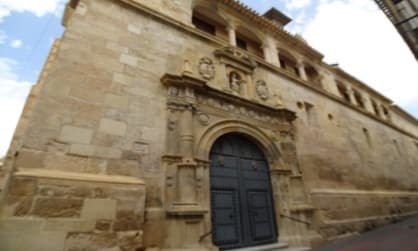
The demographic growth of Caravaca de la Cruz in the first decades of the 16th century, when the war in Granada ended, created a need to build a new church outside the walled enclosure. This is why, in 1526, the visitors of the Order of Santiago gave the go-ahead to the construction.
In 1573, the Blessed Sacrament was moved from the current La Soledad Church to El Salvador. In this way, the inauguration of the new temple was carried out. However, the building was completed 10 years later.
In 1573, the Blessed Sacrament was moved from the current La Soledad Church to El Salvador. In this way, the inauguration of the new temple was carried out. However, the building was completed 10 years later.
Virgin of Carmel Monastery Church
On March 1, 1587, by order of Saint John of the Cross, who was the Provincial Vicar of Andalusia, this convent was founded in Caravaca de la Cruz.
According to some witnesses, the saint was present when the Blessed Sacrament was placed in the provisional chapel.
Although the saint did not get to know the current church, according to Catholic tradition, it was he himself who chose the place for the convent to be built there.
According to some witnesses, the saint was present when the Blessed Sacrament was placed in the provisional chapel.
Although the saint did not get to know the current church, according to Catholic tradition, it was he himself who chose the place for the convent to be built there.
Church of the Conception
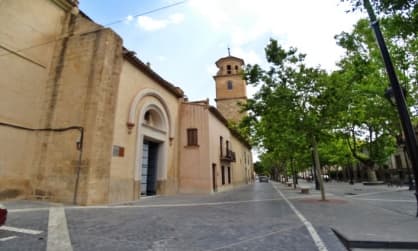
This temple was built in 1532 on the ruins of the old Church of the Hospital Brotherhood of Saint John Lateran.
The building is in the Renaissance style and its interior highlights the Mudejar-style coffered ceiling, made of polychrome wood.
Its ceiling, with geometric wooden motifs, was made by Fernández Caro, a disciple of Salzillo. It is said that the image of the Virgin was inspired by the beauty of a believer who used to attend the church.
The building is in the Renaissance style and its interior highlights the Mudejar-style coffered ceiling, made of polychrome wood.
Its ceiling, with geometric wooden motifs, was made by Fernández Caro, a disciple of Salzillo. It is said that the image of the Virgin was inspired by the beauty of a believer who used to attend the church.
College and Church of the Society of Jesus
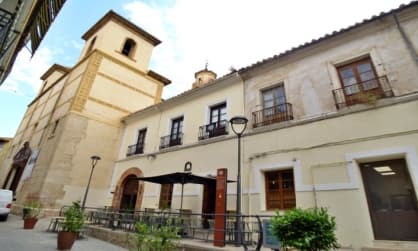
In this building, during the 16th and 17th centuries, the order of the Jesuits built a college that also had a church and a cloister. When the Jesuits were expelled in 1767 by Charles III, the college began to function as a school and the church remained as an aid to the parish.
Later, the entire building was sold. At that time, the school was used as a casino and the church was transformed into an inn.
Later, the entire building was sold. At that time, the school was used as a casino and the church was transformed into an inn.
Festival Museum

This particular museum is located in a 16th-century house. Its first owner was Don Luis de Mora, and in the 17th century, it passed into the hands of the Uribe family, from whom the Marquis of San Mamés is descended.
In the museum, the visitor can see Christian and Moorish costumes, which are the same costumes that the inhabitants of Caravaca de la Cruz wear in their famous festival in honour of the “Santísima y Vera Cruz”. It is also possible to see other ornaments used in this festival, held every year from May 1 to 5.
In the museum, the visitor can see Christian and Moorish costumes, which are the same costumes that the inhabitants of Caravaca de la Cruz wear in their famous festival in honour of the “Santísima y Vera Cruz”. It is also possible to see other ornaments used in this festival, held every year from May 1 to 5.
House-Museum of the Wine Horses

This museum is located in a restored Baroque-style building that formerly belonged to the Muso Melgarejo family.
Visitors will find it near the Wine Horses Square, one of the settings for this unique festival in the world that takes place every May 2.
In the House-Museum, the story of this festival is told, which consists of the parade of 60 horses harnessed with masterfully embroidered pieces and culminating in a race.
Visitors will find it near the Wine Horses Square, one of the settings for this unique festival in the world that takes place every May 2.
In the House-Museum, the story of this festival is told, which consists of the parade of 60 horses harnessed with masterfully embroidered pieces and culminating in a race.
La Soledad Archaeological Museum

The most important elements in its collection correspond to the archaeological remains from the sites of the Iberian sanctuary of “La Encarnación”, the towns of Villaricos and Los Villares.
In addition, Caravaca de la Cruz has important archaeological sites from the period of Roman Domination.
Also, fundamental pieces of the museum are those that come from the paleontological remains of the Black Cave.
In addition, Caravaca de la Cruz has important archaeological sites from the period of Roman Domination.
Also, fundamental pieces of the museum are those that come from the paleontological remains of the Black Cave.
Carrilero Museum
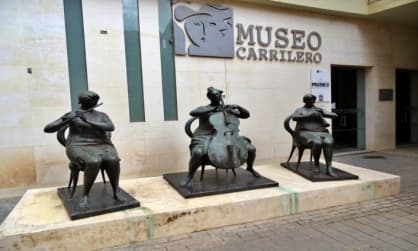
The museum presents a collection of 90 works donated by the native sculptor of Caravaca de la Cruz, Jose Carrilero.
You can see a representative sample of the art of Jose Carrilero, observing first sketches and figurative proposals that were later transformed into sculptures.
Another collection shows the sculptural work of Jose Carrilero through bronzes and sculpted and engraved medals.
You can see a representative sample of the art of Jose Carrilero, observing first sketches and figurative proposals that were later transformed into sculptures.
Another collection shows the sculptural work of Jose Carrilero through bronzes and sculpted and engraved medals.
Town Hall
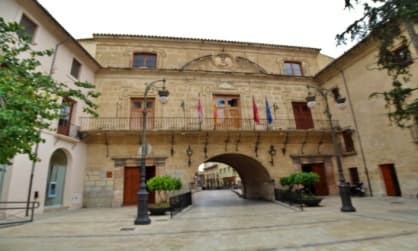
The construction of the Town Hall ended in 1762.
It was conceived to replace the building that housed the old Council, so it is possible to find in its archives documents from the year 1345.
Within its simple style, we can highlight the beauty of its main facade, which is crossed by an arch, flanked by two large doors framed with red and black marble from Peña Rubia.
It was conceived to replace the building that housed the old Council, so it is possible to find in its archives documents from the year 1345.
Within its simple style, we can highlight the beauty of its main facade, which is crossed by an arch, flanked by two large doors framed with red and black marble from Peña Rubia.
The Templete

The temple is a building with a marked Baroque style, with a hexagonal plan supported on a circumference. Construction began in 1762, on the site of an old chapel.
It is known as the “Bañadero” because since 1384, every May 3, the ritual act of bathing the Holy Cross is performed here, thus blessing the waters that are then used to irrigate the orchards.
This ritual also begins the traditional festivities in honour of the town's patroness saint.
It is known as the “Bañadero” because since 1384, every May 3, the ritual act of bathing the Holy Cross is performed here, thus blessing the waters that are then used to irrigate the orchards.
This ritual also begins the traditional festivities in honour of the town's patroness saint.
Tower of the Templars

The Fuentes del Marques Tower is popularly known as the Tower of the Templars, as legend says that it was built by these crusaders. However, its origin is quite unclear. Some believe that it was actually built on an old tower that already existed there. Others believe that it is a building that survived as part of an old agricultural and cattle ranch from the 17th century.
What we see today would be the domestic area of what was a set of buildings that included warehouses, cellars, corrals, and perhaps a hermitage.
What we see today would be the domestic area of what was a set of buildings that included warehouses, cellars, corrals, and perhaps a hermitage.
El Tower is currently the headquarters of the Nature Interpretation Centre. It is located within the area of “Fuentes del Marques”, 2 kilometres from Caravaca de la Cruz. This farm also has a particular history and receives its name from the fact that one of its owners was heir to the Marquis of San Mamés.
Nature Interpretation Centre

The Nature Interpretation Centre is located inside the Tower of the Templars, a 16th-century building, which has probably been built over an older one created by the Crusader Knights.
Its location is excellent for instilling a love of nature and the surroundings of Caravaca de la Cruz, as it is immersed in the beautiful Paraje de Las Fuentes del Marques.
In the Interpretation Centre, the flora, fauna, and ecological systems of the region are discovered through a display of recreational characteristics.
Its location is excellent for instilling a love of nature and the surroundings of Caravaca de la Cruz, as it is immersed in the beautiful Paraje de Las Fuentes del Marques.
In the Interpretation Centre, the flora, fauna, and ecological systems of the region are discovered through a display of recreational characteristics.
The objective of this Interpretation Centre is to learn to appreciate and enjoy the surrounding environment, so as to respect it and contribute to its conservation.
Fuentes del Marques
This is a natural park two kilometres from the city of Caravaca de la Cruz, where a large number of crystalline water springs can be seen. These springs are at the end of the area, and are popularly known as "Pans".
Within the Fuentes del Marques, we find the Cuevas del Marques, which, due to the ceramic materials found, dating from the 11th century, is estimated to be an agricultural settlement.
Within the Fuentes del Marques, we find the Cuevas del Marques, which, due to the ceramic materials found, dating from the 11th century, is estimated to be an agricultural settlement.
Palace of La Encomienda de Santiago

This Baroque building was built in 1802. The “Encomienda” was a place used to store grains, wine, and other provisions from the agricultural activity in the area. Horses were also kept here and the “Tercia” tax was collected.
In 1450, the Encomienda ceased to be in the hands of the Order of Santiago and became a secular manor of Alfonso Fajardo, El Bravo. Eleven years later, in 1461, the Order of Santiago recovered the Encomienda. With the confiscation of the 19th century, it passed into private hands.
In 1450, the Encomienda ceased to be in the hands of the Order of Santiago and became a secular manor of Alfonso Fajardo, El Bravo. Eleven years later, in 1461, the Order of Santiago recovered the Encomienda. With the confiscation of the 19th century, it passed into private hands.
Unfortunately, its large interior patio has disappeared. The hallway, part of the main corridor, and its cellars are still preserved, where 91 original jars of the 120 that the Encomienda came to have still survive.
Hermitage Sanctuary of the Incarnation
The Hermitage of the Incarnation is located just over a kilometre from the hamlet of Los Prados.
Between the second and first centuries BC, two Roman temples were built on the hill of the Hermitage of the Incarnation, on a temple from the Iberian era.
As they had done in other conquered regions of the Iberian Peninsula, the Romans built on ancient temples, in an act of power that demonstrated their dominance.
Between the second and first centuries BC, two Roman temples were built on the hill of the Hermitage of the Incarnation, on a temple from the Iberian era.
As they had done in other conquered regions of the Iberian Peninsula, the Romans built on ancient temples, in an act of power that demonstrated their dominance.
Inside the complex, you can see the quarries from which the materials with which the temples were built were extracted. These quarries have survived until the beginning of the 20th century, using the same techniques used by the ancient Roman builders.
Strait of the Caves of the Incarnation
The Strait of the Incarnation is recognized for its scenic beauty, in addition to its botanical importance, and especially for its paleoanthropological and archaeological value. It is one of the most important historical sites in Murcia. In the Strait, human settlements have been found that span from the Palaeolithic era to our time. Some of the most interesting places found in the Strait are the Black Cave, the towns of Villares and Villaricos, and the Hermitage of the Incarnation, where it is possible to see two temples from the time of Roman domination.
What to see in the Noroeste region
















